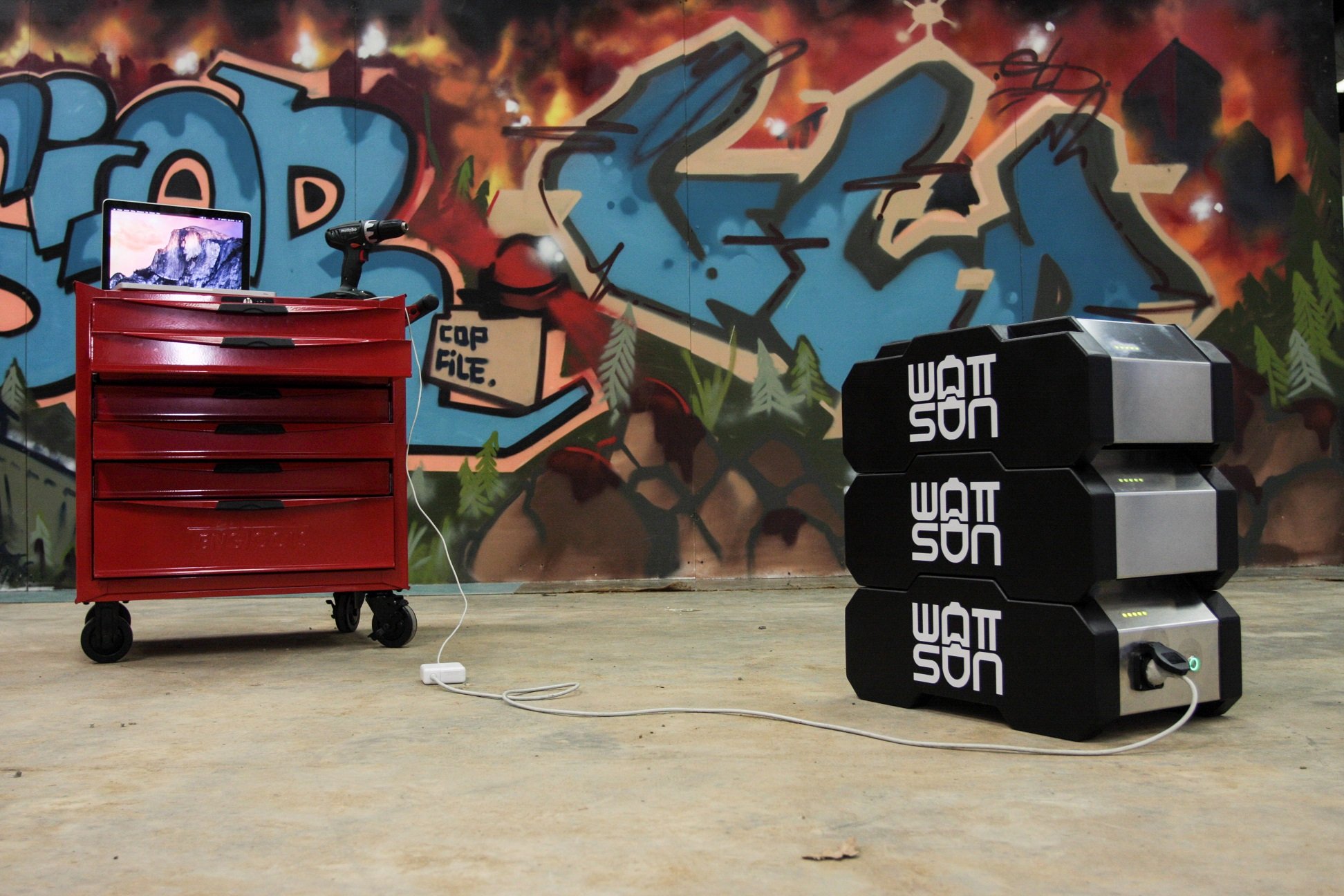
Wattsun makes battery systems for on-site events such as music festivals. But also for construction projects where workers are currently mainly using diesel generators. Wattsun batteries don’t emit any pollutants. “A huge advantage,” according to the founders of the company, Koen Olieslagers and Bart Hendriks.
What motivated you to start Wattsun and what problem did this resolve?
“When I went to festivals like Lowlands about six years ago, I found out that the organizations got all the electricity they needed from generators because there were no on-site connections to the grid. These run on diesel. At one festival, approximately 200,000 liters passed through these kinds of generators. Here in in The Netherlands, there are around 850 festivals that attract more than 3,000 visitors each. Between them, they burn through about 15 million liters of diesel every year.
When I realized that, I thought: ‘Surely that can be done far more efficiently and sustainably.’ Together with my fellow students at the Arnhem University of Applied Sciences, where I was studying at the time, we thought it would be useful to design mobile batteries that could be recharged with sustainable energy. In that case, you have consider green electricity that you buy and charge via a wall socket. This would reduce CO2, nitrogen and fine particle emissions when compared to diesel generators. This also gives the festival organizers more flexibility when drawing up their energy plans. Plus they will need fewer cables than they used to.”

What has been the biggest obstacle you have had to overcome?
“We wanted a portable battery system that you can easily take anywhere with you. The Dock base module weighs 17 kilos, and the modules that you can stack on it weigh 15 kilos each. What’s more, we wanted our batteries to be able to cope with any power demand, and we wanted you to be able to link the Wattsun’s various modules together so that you could easily expand its capacity. That was tough to do. A lecturer at the University of Applied Sciences said it couldn’t be done. But it all worked out in the end.
The Wattsun can provide a continuous supply of 2000 Watts. The time needed to produce that supply is scalable. That’s unique. What’s more, you can connect the various modules of the Wattsun to each other without a cable. There are contact points on them that automatically connect them. The battery voltage automatically adjuste to the same level. That’s important because a full battery won’t work if it’s connected to a battery that’s half-empty.”
What has been the biggest breakthrough so far?
“That we managed to make a stackable battery. We succeeded by working together with a partner who designed the electronics – a circuit board – for us. Since the technology is now complete, we have the worldwide patent on it.”
What can we expect from Wattsun over the coming year?
“Last year we supplied companies in the events and film sector as well as the construction sector in The Netherlands and Belgium. The parts were produced in Eastern Europe. And that last aspect will stay that way. We think China is too far away. We don’t think it’s sustainable to transport parts over such long distances from where you have them made. Moreover, we want to keep our know-how within Europe. The very first parts of the Wattsun were produced in The Netherlands. The idea behind that is that you then have short lines of communication and you can innovate quickly.
With my family and friends, I bolted together the very first batteries that we supplied. Not one of those came back because there was something wrong with it. I’m proud of that. Over the coming year, we want to further develop our product and expand its applications. For example, so that you can remotely access the product. And now that our product has been sold in The Netherlands and Belgium, we want to conquer the rest of Europe too.”
Where do you want to be in 5 years from now with Wattsun?
“We want our product to become the standard for on-site power.”

